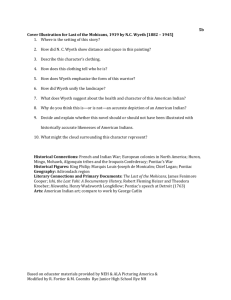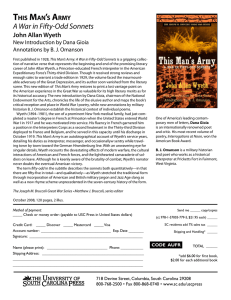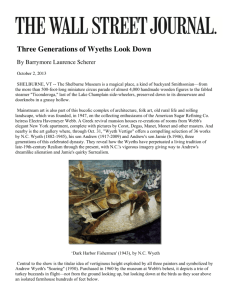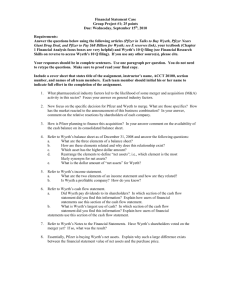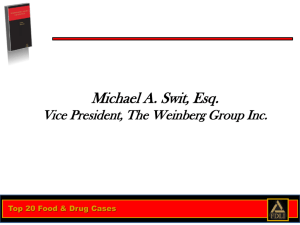Document 13826759
advertisement
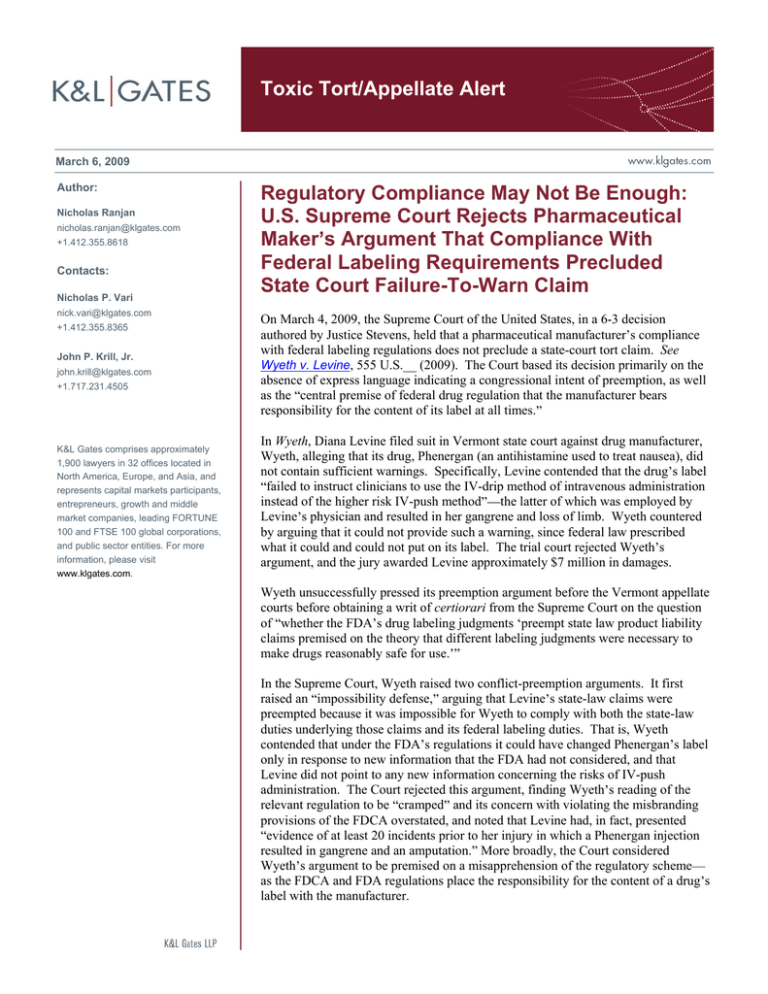
Toxic Tort/Appellate Alert March 6, 2009 Author: Nicholas Ranjan nicholas.ranjan@klgates.com +1.412.355.8618 Contacts: Nicholas P. Vari nick.vari@klgates.com +1.412.355.8365 John P. Krill, Jr. john.krill@klgates.com +1.717.231.4505 K&L Gates comprises approximately 1,900 lawyers in 32 offices located in North America, Europe, and Asia, and represents capital markets participants, entrepreneurs, growth and middle market companies, leading FORTUNE 100 and FTSE 100 global corporations, and public sector entities. For more information, please visit www.klgates.com. Regulatory Compliance May Not Be Enough: U.S. Supreme Court Rejects Pharmaceutical Maker s Argument That Compliance With Federal Labeling Requirements Precluded State Court Failure-To-Warn Claim On March 4, 2009, the Supreme Court of the United States, in a 6-3 decision authored by Justice Stevens, held that a pharmaceutical manufacturer s compliance with federal labeling regulations does not preclude a state-court tort claim. See Wyeth v. Levine, 555 U.S.__ (2009). The Court based its decision primarily on the absence of express language indicating a congressional intent of preemption, as well as the central premise of federal drug regulation that the manufacturer bears responsibility for the content of its label at all times. In Wyeth, Diana Levine filed suit in Vermont state court against drug manufacturer, Wyeth, alleging that its drug, Phenergan (an antihistamine used to treat nausea), did not contain sufficient warnings. Specifically, Levine contended that the drug s label failed to instruct clinicians to use the IV-drip method of intravenous administration instead of the higher risk IV-push method the latter of which was employed by Levine s physician and resulted in her gangrene and loss of limb. Wyeth countered by arguing that it could not provide such a warning, since federal law prescribed what it could and could not put on its label. The trial court rejected Wyeth s argument, and the jury awarded Levine approximately $7 million in damages. Wyeth unsuccessfully pressed its preemption argument before the Vermont appellate courts before obtaining a writ of certiorari from the Supreme Court on the question of whether the FDA s drug labeling judgments preempt state law product liability claims premised on the theory that different labeling judgments were necessary to make drugs reasonably safe for use. In the Supreme Court, Wyeth raised two conflict-preemption arguments. It first raised an impossibility defense, arguing that Levine s state-law claims were preempted because it was impossible for Wyeth to comply with both the state-law duties underlying those claims and its federal labeling duties. That is, Wyeth contended that under the FDA s regulations it could have changed Phenergan s label only in response to new information that the FDA had not considered, and that Levine did not point to any new information concerning the risks of IV-push administration. The Court rejected this argument, finding Wyeth s reading of the relevant regulation to be cramped and its concern with violating the misbranding provisions of the FDCA overstated, and noted that Levine had, in fact, presented evidence of at least 20 incidents prior to her injury in which a Phenergan injection resulted in gangrene and an amputation. More broadly, the Court considered Wyeth s argument to be premised on a misapprehension of the regulatory scheme as the FDCA and FDA regulations place the responsibility for the content of a drug s label with the manufacturer. Toxic Tort/Appellate Alert Wyeth next argued that requiring it to comply with a state-law duty to provide a stronger warning about IV-push administration would obstruct the purposes and objectives of federal drug labeling regulation, and would interfere with Congress s purpose to entrust an expert agency to make drug labeling decisions that strike a balance between competing objectives. The Court, examining the statutory framework of the FDCA, discovered nothing in the FDCA that would suggest that state lawsuits may hinder Congress s objectives. To the contrary, the Court concluded that the absence of an express preemption provision regarding prescription drugs coupled with the statute s preemption provision for medical devices was powerful evidence that Congress did not intend FDA oversight to be the exclusive means of ensuring drug safety and effectiveness. Wyeth, of course, represents a significant setback for entities that relied upon federal regulatory compliance as a defense to failure-to-warn claims. However, product-liability defendants should recognize that Wyeth likely will be limited to its context. The Court repeatedly emphasized the narrowness of the question involved. And the Court s implied-preemption discussion centered upon the unique FDA regulatory scheme. For instance, the Court distinguished its decision in Geier v. American Honda Motor Co., 529 U.S. 861 (2000), which involved compliance with automobile safety regulations, as involving a quite different regulatory scheme. The impact of the case-specific nature of Wyeth and the statutory or regulatory language upon the outcome may be illustrated by comparing the lineup of the justices in Wyeth with that in last term s decision in Estate of Riegel v. Medtronic, Inc., 128 S. Ct. 999 (2008), in which the Court found that state tort claims against manufacturers of certain medical devices were preempted by federal law. In Wyeth the majority consisted of Justices Stevens, Kennedy, Souter, Ginsburg, and Breyer, with Justice Thomas concurring only in the result. In Medtronic the only dissenter was Justice Ginsburg. Notably, the Court in Wyeth did not curtail its implied preemption purposes and objectives jurisprudence, which involves an assessment of Congress s purposes behind a statute and whether a state law (or, in Wyeth, a state tort claim) would undermine those purposes typically a useful defense for product-liability defendants. This implied-preemption doctrine has oftentimes been criticized for being boundless and overbroad, and Justice Thomas s lengthy concurrence in Wyeth echoed such concerns, which the majority implicitly rejected. Thus, at least outside of the precise pharmaceutical-labeling context of Wyeth, productliability defendants should be able to continue to raise an implied-preemption defense based on compliance with federal regulation; the success of the defense will be dependent upon the regulatory scheme at issue. K&L Gates comprises multiple affiliated partnerships: a limited liability partnership with the full name K&L Gates LLP qualified in Delaware and maintaining offices throughout the U.S., in Berlin and Frankfurt, Germany, in Beijing (K&L Gates LLP Beijing Representative Office), in Singapore (K&L Gates LLP Singapore Representative Office), and in Shanghai (K&L Gates LLP Shanghai Representative Office); a limited liability partnership (also named K&L Gates LLP) incorporated in England and maintaining our London and Paris offices; a Taiwan general partnership (K&L Gates) which practices from our Taipei office; and a Hong Kong general partnership (K&L Gates, Solicitors) which practices from our Hong Kong office. K&L Gates maintains appropriate registrations in the jurisdictions in which its offices are located. A list of the partners in each entity is available for inspection at any K&L Gates office. This publication is for informational purposes and does not contain or convey legal advice. The information herein should not be used or relied upon in regard to any particular facts or circumstances without first consulting a lawyer. ©2009 K&L Gates LLP. All Rights Reserved. March 6, 2009 2
